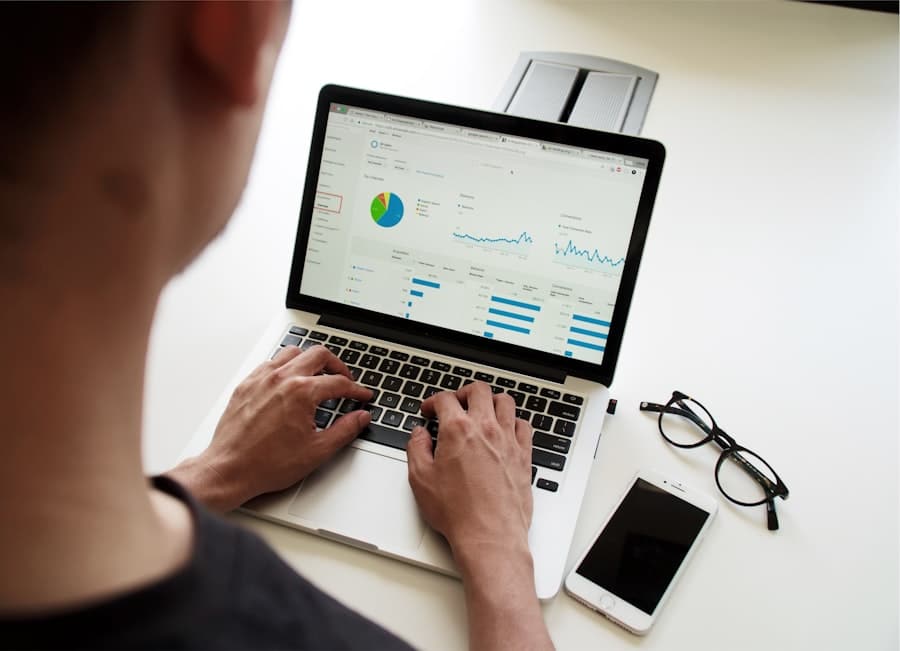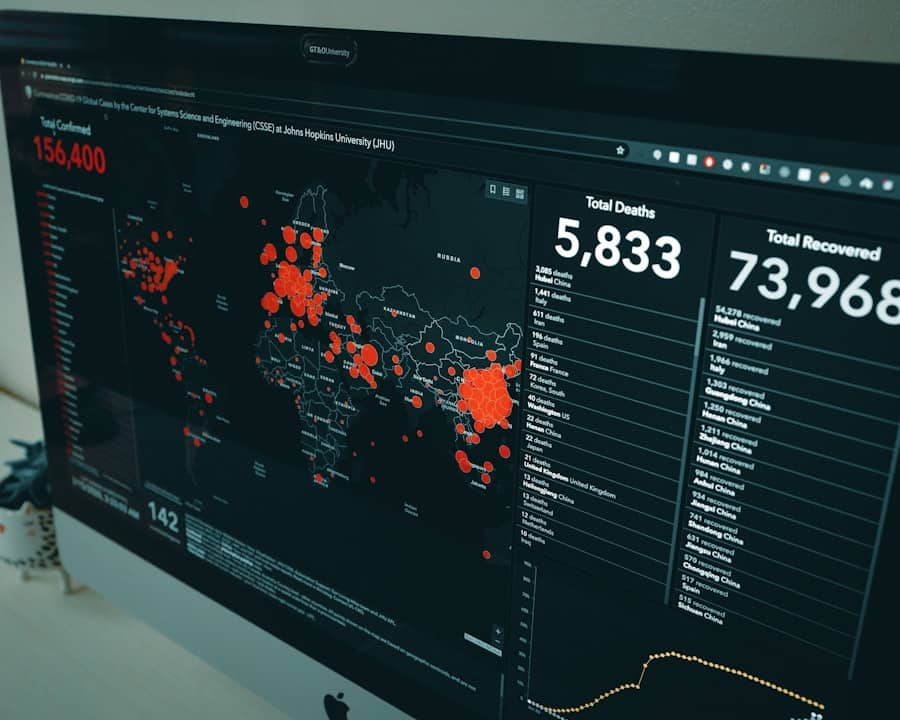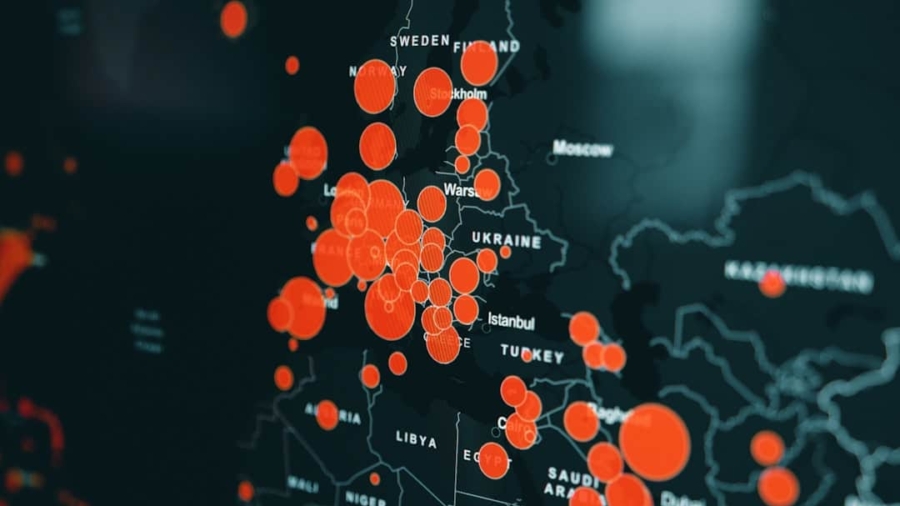The advent of artificial intelligence (AI) has revolutionized numerous fields, and public health is no exception. In recent years, the integration of AI technologies into epidemiology has opened new avenues for predicting disease outbreaks with unprecedented accuracy and speed. Traditional methods of outbreak prediction often rely on historical data and statistical models, which can be slow to adapt to rapidly changing conditions.
In contrast, AI systems can process vast amounts of data in real-time, allowing for more dynamic and responsive approaches to outbreak management. This capability is particularly crucial in an era where global travel and urbanization have increased the speed at which infectious diseases can spread. AI’s potential in predicting outbreaks extends beyond mere data analysis; it encompasses a wide range of applications, from monitoring environmental factors to analyzing social media trends.
By harnessing diverse data sources, AI can identify patterns and correlations that may not be immediately apparent to human analysts. This multifaceted approach enables public health officials to anticipate outbreaks before they escalate, ultimately saving lives and resources. As we delve deeper into the role of AI in predicting outbreaks, it becomes evident that understanding social signals—such as public sentiment and behavior—plays a pivotal role in enhancing these predictive capabilities.
Key Takeaways
- AI plays a crucial role in predicting and managing disease outbreaks by analyzing social signals and early detection.
- Social signals, such as online search behavior and social media activity, can provide valuable insights into the spread of diseases and potential outbreaks.
- AI technology enables the analysis of vast amounts of social data to identify patterns and trends that can indicate the early stages of an outbreak.
- Case studies have shown AI’s success in predicting outbreaks, such as the use of machine learning algorithms to forecast flu outbreaks with high accuracy.
- Ethical considerations and privacy concerns must be carefully addressed when using AI for outbreak prediction, ensuring the protection of individuals’ personal information and rights.
Understanding Social Signals and Their Impact on Outbreaks
Social signals refer to the behaviors, sentiments, and interactions of individuals within a community, often expressed through social media platforms, online forums, and other digital communication channels. These signals can provide valuable insights into public health trends, as they reflect the collective consciousness of a population regarding health issues. For instance, an increase in discussions about flu-like symptoms on social media may indicate a rising incidence of influenza in a particular area.
By analyzing these signals, public health officials can gain early warnings about potential outbreaks and respond accordingly. The impact of social signals on outbreak dynamics is profound. During the COVID-19 pandemic, for example, researchers observed that spikes in online searches for symptoms often preceded official reports of new cases.
Furthermore, social signals can also reveal public attitudes toward vaccination, compliance with health guidelines, and overall community engagement in health initiatives. Understanding these factors is crucial for tailoring public health responses and ensuring that interventions are effective and well-received by the community.
The Role of AI in Analyzing Social Signals for Early Detection

AI plays a critical role in the analysis of social signals by employing natural language processing (NLP) and machine learning algorithms to sift through vast amounts of unstructured data. These technologies enable researchers to identify relevant keywords, sentiment trends, and emerging topics related to health concerns. For instance, AI can analyze tweets or Facebook posts to detect changes in public sentiment regarding a specific disease or health intervention.
By aggregating this information, AI systems can provide real-time insights that inform public health strategies. Moreover, AI’s ability to learn from historical data enhances its predictive capabilities. Machine learning models can be trained on past outbreak data alongside social signal data to identify patterns that precede outbreaks.
This training allows AI systems to make informed predictions about future outbreaks based on current social signals. For example, if a particular region shows an uptick in discussions about gastrointestinal symptoms on social media, an AI model trained on similar past outbreaks could flag this as a potential risk area for a foodborne illness outbreak. The integration of AI into this analytical process not only improves the speed of detection but also increases the accuracy of predictions.
Case Studies of AI Successfully Predicting Outbreaks
Several notable case studies illustrate the effectiveness of AI in predicting outbreaks through the analysis of social signals. One prominent example is the work conducted by BlueDot, a Canadian health monitoring platform that gained attention during the early stages of the COVID-19 pandemic. BlueDot utilized AI algorithms to analyze various data sources, including news reports, airline ticketing data, and social media posts.
By doing so, it was able to identify the emergence of a novel coronavirus in Wuhan, China, days before the World Health Organization officially reported it. This early warning allowed health officials to prepare for potential global spread. Another compelling case study involves HealthMap, an online platform that aggregates data from various sources to monitor disease outbreaks worldwide.
HealthMap employs machine learning techniques to analyze social media posts, news articles, and official reports. During the 2014 Ebola outbreak in West Africa, HealthMap’s algorithms detected unusual patterns in social media discussions related to Ebola symptoms and travel history. This information was instrumental in alerting public health authorities about the outbreak’s severity and geographic spread, enabling a more coordinated response.
Ethical Considerations and Privacy Concerns in Using AI for Outbreak Prediction
While the use of AI in predicting outbreaks offers significant benefits, it also raises important ethical considerations and privacy concerns. One major issue is the potential for misuse of personal data collected from social media platforms. Individuals may not be aware that their online activities are being monitored for public health purposes, leading to questions about consent and transparency.
Ensuring that data collection practices are ethical and respect individual privacy rights is paramount for maintaining public trust. Additionally, there is a risk that reliance on AI-driven predictions could lead to stigmatization or discrimination against certain communities. For instance, if an AI model identifies a specific neighborhood as a high-risk area based on social signal analysis, residents may face undue scrutiny or negative perceptions from others.
Public health officials must navigate these complexities carefully, balancing the need for timely interventions with the ethical implications of their actions. Establishing clear guidelines for data use and fostering open communication with communities can help mitigate these concerns.
The Future of AI in Predicting Outbreaks Based on Social Signals

Enhanced Analytical Capabilities
As machine learning algorithms become more sophisticated, their ability to analyze complex datasets will improve significantly. This evolution will likely lead to more accurate predictions and earlier detection of potential outbreaks based on social signals.
Increased Data Availability
Furthermore, as more individuals engage with digital platforms and share their health experiences online, the volume of available data will increase, providing richer insights for AI systems.
Interdisciplinary Collaboration and Social Responsibility
Moreover, interdisciplinary collaboration will play a crucial role in shaping the future landscape of AI-driven outbreak prediction. By bringing together experts from fields such as epidemiology, data science, sociology, and ethics, stakeholders can develop comprehensive frameworks that enhance predictive capabilities while addressing ethical concerns. The integration of diverse perspectives will ensure that AI applications are not only effective but also socially responsible.
Collaborations between AI, Public Health, and Government Agencies
Collaboration between AI developers, public health organizations, and government agencies is essential for maximizing the impact of AI in outbreak prediction. Such partnerships can facilitate knowledge sharing and resource allocation while ensuring that predictive models are grounded in real-world public health needs. For instance, government agencies can provide access to historical outbreak data that can be used to train AI models effectively.
Additionally, collaborative efforts can enhance community engagement by involving local stakeholders in the development and implementation of AI-driven solutions. Public health officials can work with community leaders to communicate the benefits of using AI for outbreak prediction while addressing any concerns related to privacy or data security.
Recommendations for Improving AI’s Role in Predicting Outbreaks
To enhance the effectiveness of AI in predicting outbreaks based on social signals, several recommendations can be made. First and foremost, investing in research and development is crucial for advancing machine learning algorithms that can better interpret complex social signals. This includes refining natural language processing techniques to improve sentiment analysis accuracy across diverse languages and cultural contexts.
Furthermore, establishing standardized protocols for data collection and sharing among public health agencies will facilitate more effective collaboration and integration of AI systems into existing public health frameworks. These protocols should prioritize ethical considerations and ensure that individual privacy rights are respected throughout the process. Finally, ongoing education and training for public health professionals on the use of AI tools will empower them to leverage these technologies effectively in their work.
By equipping public health officials with the necessary skills and knowledge to interpret AI-generated insights, we can foster a more proactive approach to outbreak prediction and response. In conclusion, while challenges remain in harnessing AI’s full potential for predicting outbreaks based on social signals, the opportunities for innovation and improvement are vast. Through collaboration, ethical practices, and continued investment in technology development, we can pave the way for a future where AI plays an integral role in safeguarding public health against emerging infectious diseases.
In a related article, Samsung Smartwatches Review, the use of wearable technology is explored in the context of health monitoring and data collection. This article discusses how smartwatches can track various health metrics, including heart rate and sleep patterns, which could potentially be used in conjunction with AI to predict outbreaks based on social signals. By leveraging the data collected from smartwatches, researchers may be able to identify patterns and trends that could indicate the onset of a disease outbreak before it becomes widespread.
FAQs
What is the role of AI in predicting outbreaks based on social signals?
AI plays a crucial role in predicting outbreaks based on social signals by analyzing large volumes of social media data to identify patterns and trends that may indicate the potential spread of diseases or outbreaks.
How does AI use social signals to predict outbreaks?
AI uses natural language processing and machine learning algorithms to analyze social signals such as posts, comments, and geotagged data from social media platforms to identify potential indicators of disease outbreaks, such as symptoms, travel patterns, and public sentiment.
What are the benefits of using AI to predict outbreaks based on social signals?
Using AI to predict outbreaks based on social signals allows for early detection and response to potential health threats, which can help public health authorities and healthcare organizations to implement targeted interventions and control measures to prevent the spread of diseases.
What are some challenges in using AI to predict outbreaks based on social signals?
Challenges in using AI to predict outbreaks based on social signals include ensuring the accuracy and reliability of the data, addressing privacy concerns, and overcoming biases in the analysis of social media data.
How can AI predictions based on social signals be used in public health efforts?
AI predictions based on social signals can be used to inform public health efforts by providing real-time insights into potential disease outbreaks, enabling proactive measures to be taken to mitigate the spread of diseases and protect public health.

